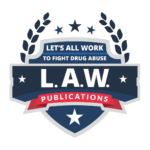
Risk Management
2024 | Fall
Excellence in Policing Program
Natalie Sellers
Risk Management
2024 | Fall
Excellence in Policing Program

Natalie Sellers
Public safety is a primary responsibility of local government, which makes up a significant part of a city’s budget and receives an outsized share of public scrutiny. City leaders work tirelessly to address rising violent crime and high-position vacancies while mitigating risk and addressing community demands and expectations.
In response to these concerns, the Georgia Municipal Association (GMA) created a 16-member Advisory Committee in 2021 to develop a certification program to support agencies that were not certified under the Georgia Law Enforcement Certification Program and cities to help achieve, maintain, and recognize excellence in policing.
Certification Program
The Excellence in Policing (EIP) program is a cooperative effort between the Georgia Municipal Association (GMA), the Georgia Association of Chiefs of Police (GACP), and Local Government Risk Management Services (LGRMS). This is a stepping-stone for cities seeking Georgia Law Enforcement Certification. The program is available to cities participating in GMA’s property and liability program, the Georgia Interlocal Risk Management Agency (GIRMA).
Criteria
The criteria for the Excellence in Policing initiative were determined by a committee of 16 members, including mayors, police chiefs, attorneys, a community activist, and a mental health expert. The result is an affordable, achievable, scalable, and measurable set of guidelines for public safety agencies.
The term is three years, with a $150 Application Fee – (one time) and an annual program Fee based on # of sworn officers:
Less than 25 = $200
25-99 = $300
100+ = $400
Required Policy Areas
- Human Resources/EEO Plan
Leaders must view the department and its employees as an investment to support this endeavor. Staffing typically accounts for 85 to 90 percent of a law enforcement agency’s budget, making employees the most valuable asset and resource. Hiring a new employee is a time-consuming, expensive process. Failing to properly assess each candidate and make informed hiring decisions can cost more in the long term.
Because of this, it is essential to identify, attract, and retain the most qualified individuals who ‘fit’ with the department. The purpose of these directives is not to require small agencies to implement an in-depth personnel system. Rather, directives related to human resources are designed to address areas with the greatest likelihood of resulting in litigation. This narrative has been created to give the reader a basic overview of critical talent management concepts related to liability mitigation.
These directives also help to minimize exposure by implementing processes prohibiting inappropriate conduct, retaining a lousy employee, or failing to provide due process when taking an employee’s “property.” All these issues apply to every department regardless of its size.
- Property and Evidence
Properly operating and maintaining an evidence room is a complex and time-consuming for all agencies. Identifying and collecting evidence is critical to facilitate the successful resolution of investigations.
In the past, legal challenges focused on the processes and science related to testing and evaluating evidence. Many issues relating to forensics have been resolved and are widely accepted by the courts. Now, greater attention is being placed on the process of collecting evidence and maintenance of the chain of custody. More specifically, evidence collection, storage, and handling are closely examined. Because of this, failure to maintain a proper chain of custody will likely result in evidence being determined to be inadmissible.
- Vehicle Operations and Pursuit
Automobile accidents are the primary cause of severe injury and death of police officers. The State of Georgia has some of the highest number of line-of-duty deaths resulting from automobile crashes in the United States.
In addition, these accidents are a primary cause of property damage and workers’ compensation claims to insurance companies representing Georgia agencies. To successfully address this issue, the governing authority and department leaders must provide the necessary support to implement strategies to avoid these incidents. Leaders must also be committed to maintaining these processes until they become ingrained in the organization’s culture and operations.
- Search and Seizure
Legal issues related to search and seizure are constantly evolving and increasingly complex for law enforcement officers. The number of court rulings being issued continues to increase. Agency leaders must ensure that officers are provided with and understand the evolving standards of conduct. This understanding must enable the officers to make quick, sound operational decisions during uncertain and rapidly evolving situations. To accomplish this more, officers must understand the legal standards for search and seizure, but they must also be observant and attentive to details during these events. Finally, officers must also be able to articulate their observations, reasoning for their decisions, and the actions taken during their investigations.
- Use of Force/Response to Aggression
Contrary to popular belief, incidents resulting in law enforcement officers’ use of force, particularly deadly force, are sporadic when compared to the number of police encounters with the public. Divergent perceptions and the inherent danger and potential litigation associated with an officer’s use of force require agencies to take a proactive stance to manage these incidents. To accomplish this, police leaders must work to ensure that department policy, training, and review of an officer’s use of force comply with established legal and professional standards.
- Arrest
An individual’s freedom to move about without governmental interference is one of the most valued rights provided to individuals under the U.S. Constitution. Because of this, a law enforcement officer’s authority to seize an individual’s freedom is an enormous responsibility that should never be taken lightly.
Failing to act appropriately when exercising the authority to arrest a person is a serious issue that can result in claims of a false arrest. To avoid the negative publicity and costly liability associated with these claims, agencies must have protective measures that include comprehensive, up-to-date operational procedures, regular training, supervisory review of officers’ performance and arrest reports, and a consistent record of holding individuals accountable for inappropriate behavior.
- Off-Duty & Extra-Duty Employment
This policy aims to protect the city, department, and officers from increased liability, potential injuries, and creating a negative image. According to O.C.G.A. § 16-10-3 (c) (1), officers “employed by private persons, firms, or corporations during his off-duty hours” must receive approval “in writing by the chief or head, or his duly designated agent, of the law enforcement agency by which such law enforcement officer is employed.” It is also important to recognize workers compensation may not pay for injuries that occur when working an extra duty job.
- Other Equipment
Ballistic Vests
According to the National Institute of Justice, soft body armor ballistic-resistant vests have saved more than 3,000 police officers’ lives in the last 30 years. That is an average of 100 officers each year. As a result, ballistic vests have become part of the standard-issued equipment for officers.
Departments must have a policy that, at minimum, requires all uniformed officers to wear their ballistic vests anytime while on duty or working an extra-duty assignment. Other officers must also be required to have their ballistic vests immediately accessible.
High Visibility Vests
According to a report by the National Law Enforcement Officers Memorial Fund (NLEOMF), there was a 93 percent (n=11) year-to-year increase in police officer fatalities that resulted from being struck by motor vehicles in 2021. This does not include the number of officers who were attacked and seriously injured.
Police officers must work in inclement weather conditions, including rain, fog, snow, and ice. The problem is compounded at night and when drivers are distracted by emergency lights and activity around an incident location. When traveling through these incident locations, drivers may not see officers providing traffic directions. In some cases, particularly at night or during holidays, drivers may be fatigued or driving while impaired.
- Crisis Incident Stress Management
Recognizing the increased likelihood of officers encountering persons with mental illness or diminished capacity, officers must receive proper guidance through departmental policy as well as training on how to operationalize these directives. In 2014, the Georgia Association of Chiefs of Police produced a report entitled Mental Health Issues in Law Enforcement: Review and Recommendations Concept and Issues White Paper. This document identifies the issues related to dealing with persons experiencing a mental health issue, the statutory legal authority to take them into custody and transport them to mental health facilities, and services available to assist.
In addition, recent court cases, as well as consent agreements with the U.S. Department of Justice under 42 U.S.C. 14141, have suggested that officers should consider an individual’s diminished capacity. To accomplish this, the agency should have a policy directing officers on interacting with persons experiencing diminished capacity.
- Multi-Jurisdictional Task Force
In recent years, lawsuits involving officers assigned to task forces have resulted in large insurance company claims. To mitigate these claims, a Memorandum of Understanding (MOU) must address various issues. This agreement should identify the lead agency, governing board assignment and authority, reporting requirements, funding formulas, processes for resolving conflicts, and separation of equipment, assets, and personnel when the task force is dissolved.
- Body and Car Cameras for All Officers
It has been determined that lawsuits are more easily resolved when attorneys can present recordings. Four out of five court decisions favor officers when officers fully record an encounter. While recordings have resulted in agencies obtaining summary judgments much faster, footage of an officer’s improper behavior can provide legal counsel with the background information needed to recommend a quick settlement and avoid unnecessary legal fees.
- Public Safety Information Officer
Today, the press is much more complex. Most traditional print newspapers have transitioned to an electronic format. In addition, the “press” includes much more than newspapers, television, and radio. Complicating the issue even more, citizen reporters work in non-traditional mediums focused on specific areas of interest. Social media enables individuals to livestream an incident where police may not have arrived on the scene or are even aware of the event.
The narrative being broadcast to thousands of persons may be based on conjecture, inaccurate perceptions, bias, or simply wrong information. In today’s politicized, fractured environment, these situations can quickly spiral out of control before officers arrive. Network television news programs operate on a 24/7 news cycle. A reporter often focuses on being the first to report an event. On a “slow” news day, an incident that otherwise would not be reported may become the lead story. Because of this, police representatives are forced to interact with the media much faster and with less time to prepare.
Program Benefits
Operational Excellence
Law enforcement leadership that is trained and proactive will experience improved morale, recruitment, and retention as a best-in-class agency. Policies are in place that lower the agency’s risk
Risk Reduction and Cost Savings
5% Discount on GIRMA Law Enforcement Liability Insurance Coverage and mitigate risk of high liability claims. Along with a long-term reduction in premium and associated costs.
Recognition
Your agency will receive recognition from GMA & GACP statewide for achieving the Excellence in Policing award.
Georgia cities of all sizes can use the EIP Program to demonstrate a commitment to professional standards while cost-effectively and efficiently reducing law enforcement liability. The program walks agencies through strengthening departmental policies and practices and offers peace of mind for city leaders.
1 Citaton one goes here
2. Citation two goes here

David Blake

Duane Wolfe

Guler Arsal

Joel Suss
Research contributor and author info go here.

Natalie Sellers
Natalie Sellers has served as a Senior Law Enforcement Risk Consultant with Local Government Risk Management Services (LGRMS) for the past 10 years. She holds a Bachelor of Arts in Criminal Justice from Augusta State University and a Master of Arts in Criminal Justice from Troy University. Previously she served as a parole officer, academy instructor, and Assistant Chief with the Georgia State Board of Pardons and Paroles.











